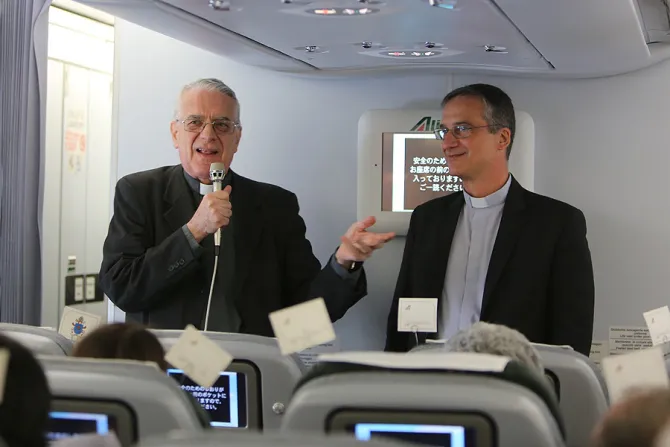Vatican City, Jan 9, 2016 / 06:08 am
Amid the lengthy process of reforming Vatican communications, the Secretariat of State has stated that the Holy See press office's administrative and human resources branches are to be handed over to the new Secretariat for Communications.
The announcement came in a Dec. 21, 2015 letter signed by Cardinal Pietro Parolin, Vatican Secretary of State.
The letter also noted that the press office's Bollettino, used to deliver official information, will remain under the control of the state secretariat, in accordance with Pastor bonus, the 1988 apostolic constitution of St. John Paul II which regulates the functions and tasks of the Roman Curia's dicasteries and departments.
The Holy See press office's other activities, however, will be coordinated with the communications secretariat so as to "secure the unification of all the communications processes, which are within the competence of the Secretariat for Communications."
Cardinal Parolin's letter recalls that the Pope entrusted the Secretariat for Communication with a "comprehensive restructuring" of all Holy See communications efforts.
The drafting of the statutes of the Secretariat for Communication is still underway, but the letter clarifies that the Holy See press office will be part of the new secretariat.
The project for the restructuring of Vatican media is proceeding on a four-year plan. According to a source within the Secretariat for Communications, "the secretariat will take over control of the delivery of official information at the end of that term, and the passage of competences from the Secretariat of State to the communications secretariat will be gradually assessed in the course of these four years."
The same say as Cardinal Parolin's letter was delivered, the Holy See press office announed the appointment of Greg Burke as its deputy director, and of Stefano D'Agostini as director of the Vatican Television Center.
Burke has served as the Secretariat of State's senior advisor for communication for three years; he will replace the current deputy director, Fr. Ciro Benedettini, who will retire as he will turn 70 in February. Burke is likely to serve as a liaison between the state and communications secretariats.
D'Agostini has spent all of his career within the Vatican Television Center. He replaces Msgr. Dario Edoardo Viganò, who is now prefect of the Secretariat for Communications. D'Agostini was "technical head" at CTV, and will largely manage the organization of filming, while the Secretariat for Communications will manage the content.
The Pontifical Council for Social Communications will likely be absorbed by the Secretariat for Communications, which is expected to move its headquarters to the building which currently hosts the pontifical council.
Archbishop Celli, currently president of the Pontifical Council for Social Communications, will turn 75 in July, reaching retirement age. He is not expected to be replaced.
Archbishop Celli's deputy, Monsignor Paul Tighe, was transferred Dec. 19, 2015, to the Pontifical Council for Culture. He is to be its adjunct secretary, and will be consecrated a bishop.
At the conclusion of the four-year plan for the reform of Vatican media, it is likely that all offices involved in Vatican communications will be under the control of the Secretariat for Communications. Moreover, a unified newsroom to manage news content is being studied.



